Case Study: SpecialGuest
How I helped communications and art company SpecialGuest by doing a substantive website edit
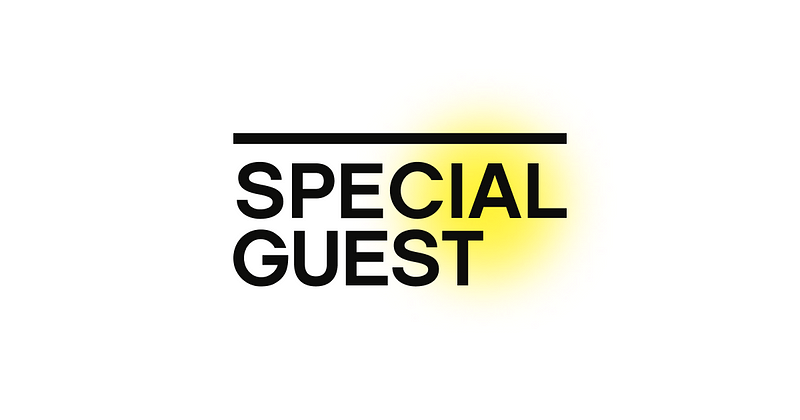
Situation
In May 2023, a colleague I had edited for at The Atlantic and then at Cove emailed me from a new company, SpecialGuest, to ask if I would do a full copy edit of the agency’s website.
SpecialGuest, co-founded by Aaron Duffy, whose name you might know from his work on OK Go’s viral music video “The Writing’s on the Wall,” helps “the world’s most influential brands” create “communications as innovative as their products.”
By chatting via email with other staff members at SpecialGuest, I learned that the agency was balancing quite a few projects and wasn’t ready to dive into a website copy edit quite yet. I checked in a month later, then again almost one year later.
This time, SpecialGuest was ready! The project manager scheduled a virtual video chat with Aaron Duffy and one of the agency’s designers, during which we hashed out the goals and details of the project.
SpecialGuest didn’t want just a copy edit to remove errors, it wanted consistent, simplified, optimized language from the Home, About, and Contact pages to the Our Clients page and case studies, to bring the copy up to date with what is true for the agency now. In other words, it wanted a substantive edit.
Over the next two weeks, I created a proposal and project estimate, finalized the contract with the agency, and received the 50 percent deposit.
Task
SpecialGuest needed to update the case studies featured on its Our Clients page. While the Home page reflected the agency’s current voice, tone, and brand, the case studies, published as long ago as 2015, did not.
“We’re not always speaking the same language project to project,” Duffy said.
Scope of the project
In addition to the substantive edit, I would user-test the website—noting formatting or design that didn’t make sense, repeat images, fuzzy images, etc.—and build an editorial style guide for the agency.
SpecialGuest wanted the project completed by early May 2024, when a forthcoming launch would result in many eyes on the website.
Action
SpecialGuest provided me with a spreadsheet an intern had built to audit the website and note suggested fixes. It also shared its pitch deck for clients as an additional reference for how the agency talks about itself.
Over a week, I copy-pasted SpecialGuest’s web copy into a Google Doc, where I tracked my changes and left comments with larger questions or requests for additional information. This would allow edits to be a discussion: If SpecialGuest wanted to push back on or talk about an edit, it could.
Once the edits were finalized, I entered the changes into SpecialGuest’s content management system.
SpecialGuest did not have an existing style guide, so during the edit, I noted obvious style preferences shown on the website and collected and organized them in a Google Doc.
I also:
Reviewed all case studies to determine a consistent structure, based on the agency’s existing structure, and reorganized the content to suit that structure;
Trimmed or lengthened the case studies so they were roughly the same word count;
Watched every video on the case-study webpages to pull more details about each project;
Made sure each case study addressed the ethos of the Home page;
Copyedited and user-tested the entire website; and
Left comments asking for clarification or additional information.
SpecialGuest reviewed the changes and responded to comments.
Result
In a month, I performed a substantive edit of four website pages and 33 case studies, helping SpecialGuest to present a unified front that powerfully conveyed the pioneering work it had produced for clients.
Besides noting style preferences, the editorial style guide I created for SpecialGuest included a case-study template to help the agency sustain consistency as it published more case studies.
Want to see the finished product for yourself? Check out the website and its case studies here.
Enjoy this post? Buy me a coffee in support.
Hi, I’m Jaime, editor and owner of Pristine Editing LLC. To get to know me better, and for more editing tips, sign up for my quarterly email newsletter! You can also follow me on LinkedIn and Instagram. And don’t miss out on my free style guide template.
A Small Yet Mighty Step I’ve Taken to Get Myself Credit as an Editor
When I first started working as a freelance copy editor in 2014, getting recognition for my work was furthest from my mind.
What was front and center was getting work. Any kind, any pay.
Then I began working as full-time copy editor at Time Out New York and learned the pleasure of having my name included in the masthead of every weekly issue.
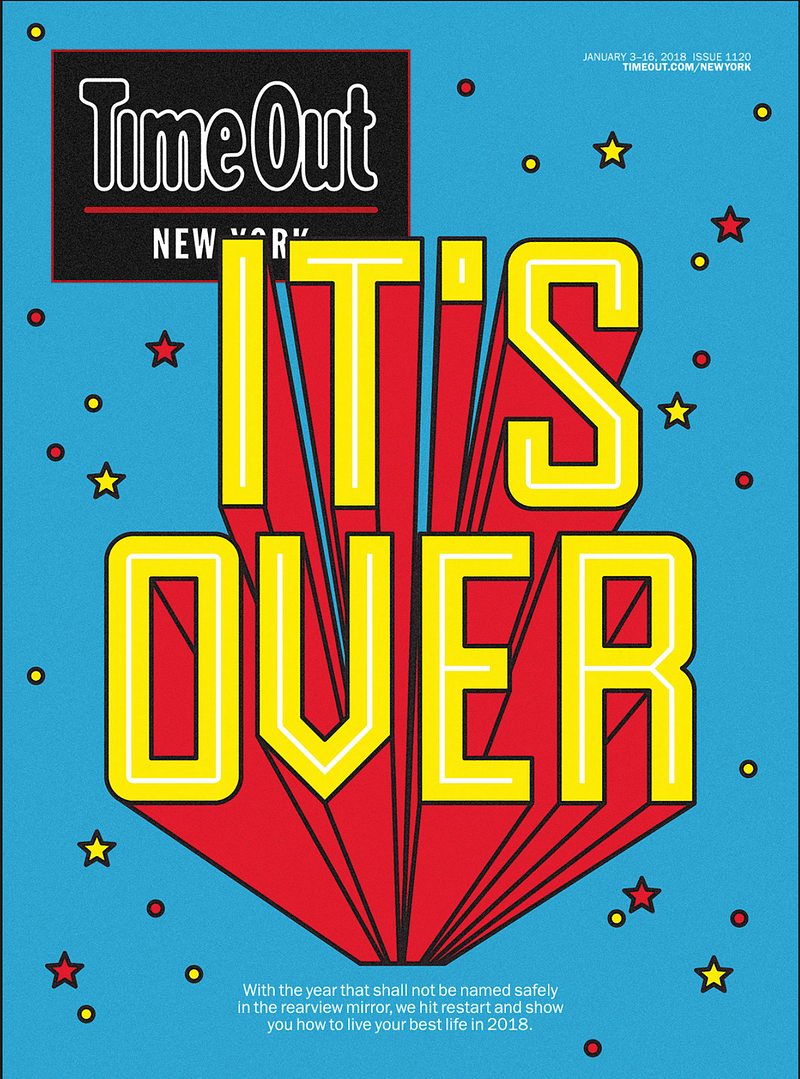
The cover of the last TONY issue I worked on in January 2018
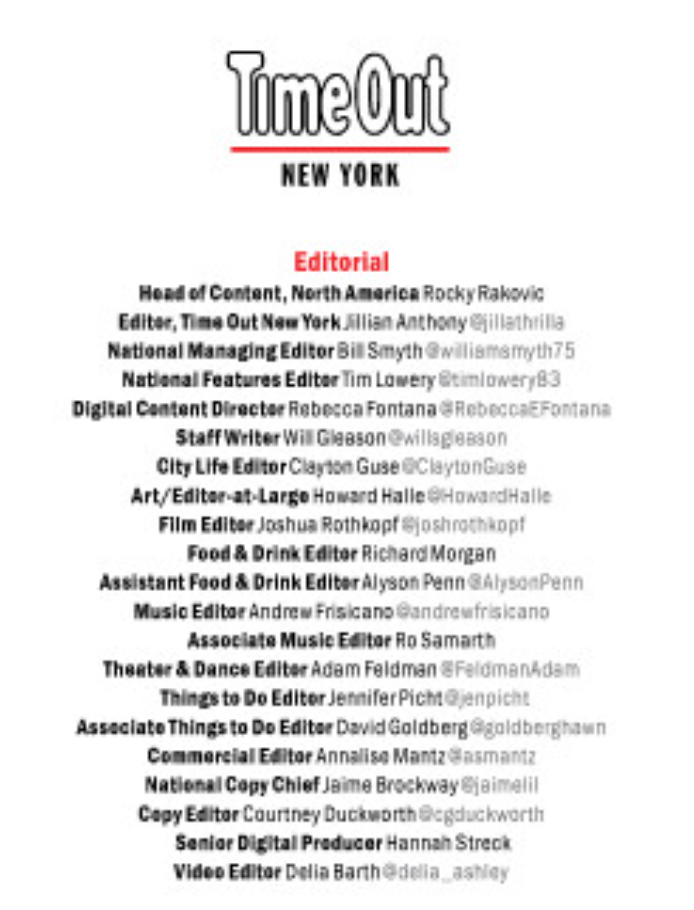
My name in the blurry masthead of the last TONY issue I worked on in January 2018 (four up from the bottom)
So it’s surprising even to me that I didn’t push for my name to be featured on clients’ projects when I again began freelance editing in 2018.
I copyedited fiction manuscripts whose authors mentioned their developmental editors but not me. I copyedited regularly for well-known content agencies and Fortune 100 businesses that never included my name anywhere on the multimedia content whose language I fine-tuned.
Occasionally I thought it would be nice to receive recognition, but I never did anything about it. It was just how the industry worked, I thought.
Of course, I named my clients (at least, all those who didn’t require me to sign an NDA) on my LinkedIn page and website.
But I realized I was missing out on referral opportunities by not having my name on the projects themselves.
At least one client has told me that he contacted me because he saw my name on a project he admired.
Clearly, getting credit matters.
This year, I’ve made a point of asking clients to feature my name.
So far, the response has been along the lines of: “Happy to! I’m sorry we didn’t think to do it sooner.”
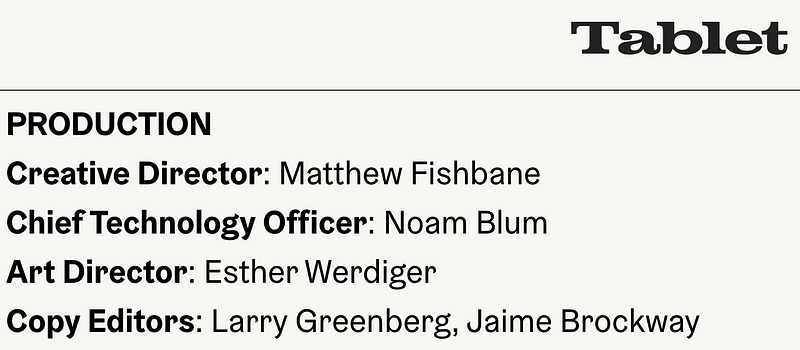
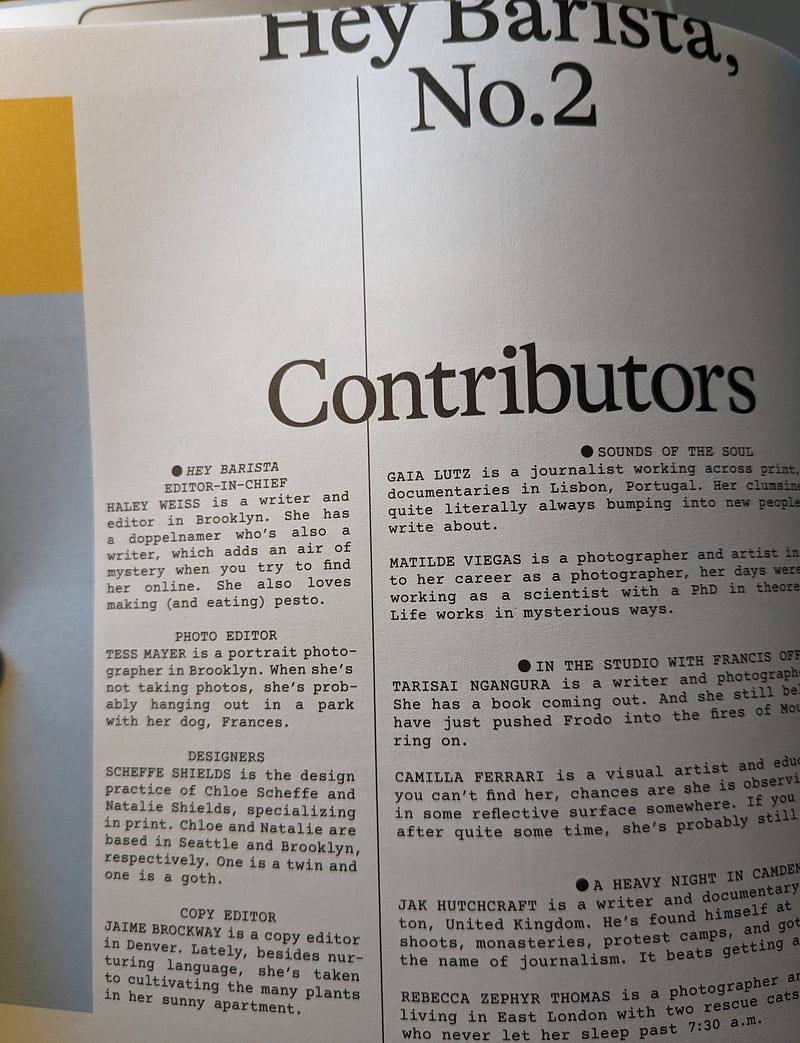
My bio in the bottom left corner of Oatly’s
Freelancing is challenging in many ways—mainly in that any success you have, or don’t have, is entirely on you. Would I have learned to advocate for myself as well if I weren’t a freelancer whose livelihood depended partly on getting credit? Probably not!
What small yet mighty step can you take today to receive credit for your work?
Enjoy this post? Buy me a coffee in support.
Hi, I’m Jaime, editor and owner of Pristine Editing LLC. To get to know me better, and for more editing tips, sign up for my quarterly email newsletter! You can also follow me on LinkedIn and Instagram. And don’t miss out on my free style guide template.
I’m a Longtime Pro Editor Offering Consultation to New Editors
Access me for advice at BuyMeACoffee.com

Photo by
on
As with trying to start any new side gig, breaking into freelance editing can be daunting.
While there’s a wealth of online courses and books that share how to be a successful freelancer and editor, true confidence in your skills comes with practice over time.
If you’re new to editing, you may not feel 100% certain of your ability to meet clients’ needs or deliver quality editing services. Those feelings of insecurity or imposter syndrome are an obstacle to your success as a freelance editor.
For me, learning the ropes of editing under the mentorship of more experienced editors was crucial to the development of my skills and confidence.
So I decided to try and create the same experience for others. I want this Buy Me a Coffee community to be a place where new or aspiring editors — freelance or otherwise — can reach out to me for advice or assistance.
https://media.giphy.com/media/GNBCVMv6XobnMUMYJG/giphy.gif
On Buy Me a Coffee, I’m offering two memberships:
☕ The Skim Readers. I will do a weekly Q&A, giving a long-form answer to a member’s question about any aspect of editing or freelancing. $5/month or $50/year.
☕ The Word Surgeons. In addition to getting access to the Q&A, Word Surgeon members will also get one hourlong consultation with me per month, during which you can ask me anything or even have me review your edits to a project so you can feel extra confident you’re providing quality to a client. $45/month or $450/year.
Read more details about the Word Surgeons membership.
My hope is that these memberships will ease the doubts and anxiety you may feel as you go forward.
I so look forward to welcoming you to my editing community!
My Background As an Editor
After four years of honing my editing chops at NYC magazines, I began freelancing full-time in January 2018, and I haven’t looked back!
Today I specialize in copy editing and line editing branded content, websites, blogs, fiction books, print and digital magazines, apps, daily newsletters, and more for clients who are all over the map — geographically and industry-wise.
You can learn more about my clients and history on my website or LinkedIn.
Also, after several people reached out to ask me how I became a freelance editor, I created the below video to answer that question.
[embed]https://www.youtube.com/watch?v=iSDkFkr4gRU[/embed]
Every year of freelancing has been different than the one before. And that’s something I love about it: Freelancing is a constant experiment in how I can be doing things better, faster, or smarter.
It can be nerve-racking! But it’s also fun, and I believe that it has made me a better, more competitive editor than I was while working for one company.
Enjoy this post? Buy me a coffee in support.
Hi, I’m Jaime, editor and owner of Pristine Editing LLC. To get to know me better, and for more editing tips, sign up for my quarterly email newsletter! You can also follow me on LinkedIn and Instagram. And don’t miss out on my free style guide template.
Client Etiquette: How an Editor Should Interact with a Client Always
And the recent etiquette mistake I made even though I knew better
Photo by
on
Let me tell you about a recent mistake I made as an editor.
I was doing a developmental edit of a 3,000-word blog post for a tech startup. This startup did not have its own writers; instead, it hired a service that provided a handful of writers to produce regular blog content.
My job was to ensure that these writers adhered to the voice and style of the tech startup, and that the content was error-free and engaging. I would review each post twice: first a developmental edit, then a copy edit.
During the developmental edit, I would leave comments to the writers with suggestions for improving structure and organization; simplifying or clarifying language; explaining a complex idea more thoroughly or accurately; and meeting the tech startup’s style guidelines.
The content was complicated—think artificial intelligence and sales processes—and the writers were not subject experts.
Still, after more than a month, the startup’s editorial manager and I felt that the writers were not listening to our feedback as well as they should. It seemed we were repeatedly giving them the same notes, and the writing at times was rushed and sloppy.
That created more work for me as the editor and delayed the content production timeline for the startup.
So the editorial manager sent an email to the writing service pointing out the blog posts that were weak and why they needed more attention, adding that some writers didn’t seem to be making an effort to research and understand the material. The writing service responded and promised to improve.
However, when I began to edit the next 3,000-word post that came in, I was dismayed to see that many of the same issues remained.
One particular section of the post, a large paragraph, not only didn’t address our previous feedback but also just didn’t make sense. The writer clearly didn’t understand the tech or even the industry of the startup, and as a result, the sentences were vague and confusing and the information shared was incorrect.
I sighed, then highlighted the section and left a comment: “This isn’t working. The writer doesn’t seem to understand the subject matter. Please fix.”
That comment unleashed the kraken.
https://media.giphy.com/media/3ogwFUjNax6RYPvJm0/giphy.gif
The owner of the writing service wrote a furious response. He said my comment was disrespectful and unhelpful (to summarize a much longer rant).
And you know what? He was right.
I had forsaken a cardinal rule of editing that I had learned long ago:
Always be kind and helpful in comments to the writer.
Etiquette demands that an editor should always be conscious of tone of voice when interacting with and providing criticism to the writer.
We have to show respect for the people who create content out of nothing! Being a writer is challenging—especially when you’re writing about something of which you know nothing (a common occurrence for a professional writer).
Beyond that, I knew very well that comments to writers should never just point out problems. They should always suggest a solution in tandem.
What is a writer supposed to do with a comment that says “This doesn’t work” but doesn’t provide a way forward? Maybe that writer struggled to get to that point, simply didn’t know what to do to strengthen that section, and just needed some guidance. In that case, receiving a comment like mine would be frustrating and demoralizing.
Leaving helpful comments is a practice I uphold with every client I have, and I also firmly believe it’s a great way to filter out editors who aren’t a good fit for you.
If your editor isn’t supplying you, the writer, with comments that not only point out the problem but also offer an actionable solution or next step—in a pleasant, respectful tone of voice—then it’s time to look for another editor.
Which is why I was disappointed in myself for leaving such a short comment. I knew better.
Sure, the editorial manager and I had already given the writing service a lot of feedback. That was why I left the comment I did—I imagined the writer would make the connection between my comment and that feedback.
After all, the writer is responsible for consuming and listening to all constructive criticism in order to do better in the next round.
But a comment in a Google doc was not the place to get snarky.
I should have listed all the reasons the section did not work and share a suggestion. And then the editorial manager could have stepped in to have a larger conversation with the writing service about meeting the tech startup’s needs.
As an editor who also writes professionally, I recognize how important it is to have an editor who respects the work you put in to creating content.
And that respect should shine through in every interaction writers have with their editors.
Enjoy this post? Buy me a coffee in support.
Hi, I’m Jaime, editor and owner of Pristine Editing LLC. To get to know me better, and for more editing tips, sign up for my quarterly email newsletter! You can also follow me on LinkedIn and Instagram. And don’t miss out on my free style guide template.
The Sanctity of the Writer-Editor Relationship
There’s an unspoken pact between writers and editors.

Photo by
on Unsplash
Recently I rewatched Mary Norris’s Ted Talk—for possibly the 20th time—and, as always, a new gem stood out to me. Norris, former New Yorker copy editor, touched on the writer-editor relationship:
There is a pact between editors and writers. The editor never sells out the writer, never goes public about bad jokes that were cut or stories that went on too long. A great writer saves an editor from her excesses.
Listening to this quote had me nodding along in agreement, and it made me want to explore the writer-editor relationship further for the sake of my clients—or for potential future clients who are currently hesitant about working with an editor.
Writers, especially new writers, may think that sharing their work with an editor will “out” them as a…bad writer. Someone who doesn’t deserve to be among the ranks of those who call themselves scribes.
That’s why I want to share a key lesson I learned early on in my career as an editor:
Everyone needs an editor. Everyone.
It matters not in the slightest whether you are a naturally strong writer or even a great editor! Whatever you wrote can be improved by another pair of eyes, and further still by a pair of professional eyes. I’ve been a professional editor for eight years, and I still ask others for feedback and edits on important work.
As someone who also writes, I take great comfort from this lesson. I no longer fear criticism of my written work because I know every writer receives criticism. It’s just part of the process.
I’m not embarrassed by the “faults” in my writing because I’ve seen it all as an editor—and I am being completely honest when I say that I don’t judge as I edit. I never think, Oh, jeez, a dangling modifier, don’t they know anything about syntax? or Wow, that’s a major plot gap, how could they have missed something so egregious?
Furthermore, I never assume writers don’t know the rules of grammar, spelling, punctuation, etc., if their work includes such an error.
Editors know that writers encounter all kinds of obstacles in the writing process: deadlines, heavy workload, lack of inspiration, low expertise in the topic, simply having lived with a piece of work too long to be able to see it clearly…
The act of writing is challenging. What’s more, writing and editing use two different brain modes, as Anupam Krishnamurthy says in his post “Separate your writing from your editing”:
Our brain alternates between working in the diffuse mode and the focused mode. The diffuse mode is responsible for open, creative thinking.… The focused mode…helps us determine logic, structure and sequence.… For a given task, the brain can be either in the focused mode or the diffused mode. Mixing up our writing and editing causes us to switch between these two modes, breaking the flow of our thought.
For writers to get the words on the page, they have to release the unrealistic goal of making it perfect the first time around.
What writers need to know about editors is that we have a profound respect for you. Because it takes determination and creativity to write. Editors react to the text. Writers create it from nothing.
This lays the foundation for the writer-editor relationship.
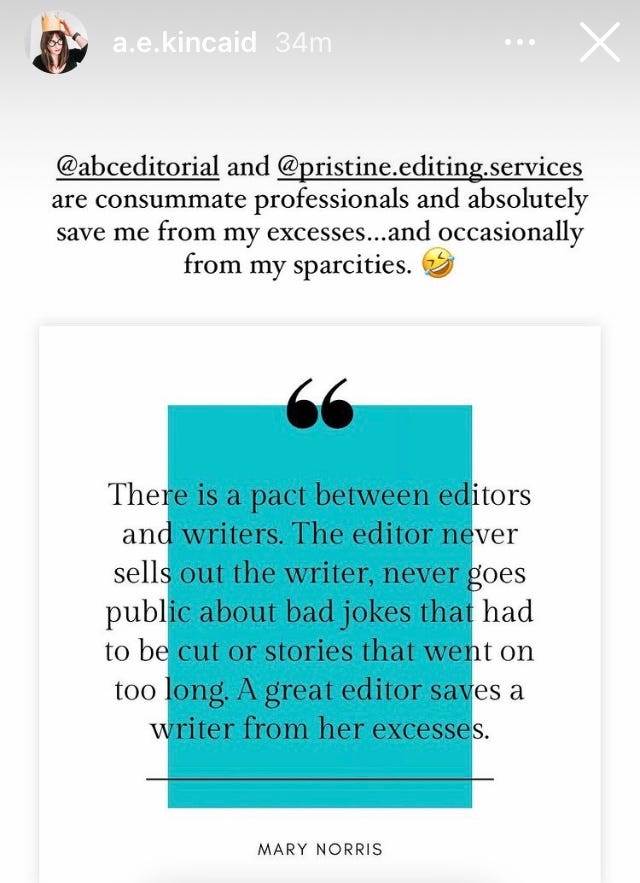
A little client love from a book author
The editor never sells out the writer because that would just be…blind to the writing process.
The writing process is a cycle of prewriting, drafting, revising, and editing on repeat until the work is the best version it can be.
Just as our private thoughts are not who we really are, incomplete drafts do not determine the writer. What matters is what we put out into the world: the final draft.
Editors understand that, which is why it doesn’t faze us to make even hefty changes and suggestions to a writer’s work—be it a manuscript, blog post, thought piece, anything.
Some writers may struggle with the idea of ownership when it comes to their work. If an editor gives me tons of feedback or makes lots of changes, is the work even my own at that point?
Yes, it is.
The writer is the creator, and the editor is the reactor. And the editor will never share what the excesses, gaps, or errors were in the drafts because, frankly, it doesn’t matter.
Hi, I’m Jaime, editor and owner of Pristine Editing LLC. To get to know me better, and for more editing tips, sign up for my quarterly email newsletter! You can also follow me on LinkedIn and Instagram. And don’t miss out on my free style guide template.
Can an Editor Also Be a Writer?
Yes. Here’s why being a “sometimes writer” makes me a better editor.

Photo by
on
Acquaintance: “What do you do?”
Me: “I’m an editor and sometimes writer.”
That’s been my response for a few years now.
Editing is my main gig. Most of my work over the past decade has been focused on editing. Most of my clients use me for editing, not writing.
Still, there’s never been a time in my career when I was doing only editing or only writing. The two are inseparable.
https://media.giphy.com/media/iFsCkq1xk05l4DbgrY/giphy.gif
My first job after undergrad was as a reporter and staff writer for an industry newspaper. The team was so small—me, plus another journalist—that he and I also proofread each other’s work.
As an editorial intern at Food52 in NYC, I would regularly write and line-edit articles. (You can view my posts here.) At Well+Good, I line-edited five articles a day and occasionally pitched ideas for travel tips and essays.
When I began my role as copy editor at Time Out, my daily responsibilities revolved around editing. But it was simple to pitch a story idea to the editors of each vertical—they were only a desk away, and everyone was encouraged to contribute to editorial brainstorm sessions. Sometimes vertical editors needed all hands on deck to write a feature, or their regular freelance writer wasn’t available and they were desperate for help.
So, while I was at Time Out, I wrote blog posts and theater and restaurant and hotel and bar reviews, and I contributed to features. (Plenty of magazine copy editors occasionally write something—for instance, The Atlantic’s copy chief, Janice Wolly.)
Later, as a freelancer, I routinely wrote case studies for a client who then asked me to developmental-edit other writers’ case studies because mine were strong. #humblebrag
In the freelance world, a huge emphasis is placed on niching.
New freelancers are told that the best way to attract clients is by choosing a niche—the one thing you are an expert in (or say you’re an expert in). Advanced freelancers advise that a niche is key to charging more money because you can claim to be an expert, the best in the biz in that one thing.
Consequently, people looking to hire a freelancer are told to avoid jack-of-all-trades. It’s a red flag if a freelancer claims to be good at too many things.
I agree—to some extent.
But I firmly believe that being a writer makes me a better editor.
By writing, I remember the writer’s perspective. I’m reminded of how frustrating and tedious the writing process can be and how much effort and dedication it takes.
More important, I recall what it feels like to receive criticism of my writing. And that makes me a more empathetic editor.
I aim to be sensitive, clear, and specific in comments to writers and authors because I know what it’s like to receive disrespectful, vague, ineffectual feedback on writing I worked hard to produce.
As a writer, I appreciate constructive criticism on what could be better in my work, and positive feedback floods me with motivation. It gives me the fuel I need to get to the next draft. And that’s exactly what I want to inspire among my clients, authors and content producers alike.
When I polled other editors on Twitter, 42.9% said they too also write, while 40% of editors said the same in an Instagram poll (only seven people voted, but still!).
Of course, I’ve met excellent editors who simply don’t like writing.
But I feel that it gives me a competitive edge and makes me more valuable to my clients. Plus, I enjoy exercising the writing muscle!
So, in honor of Freelance Writers Appreciation Week (Feb. 13–19), here’s to all the other editors out there who also write.
Hi, I’m Jaime, editor and owner of Pristine Editing LLC. To get to know me better, and for more editing tips, sign up for my quarterly email newsletter! You can also follow me on LinkedIn and Instagram. And don’t miss out on my free style guide template.
